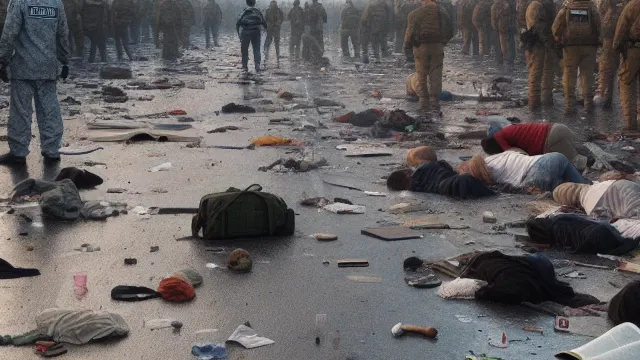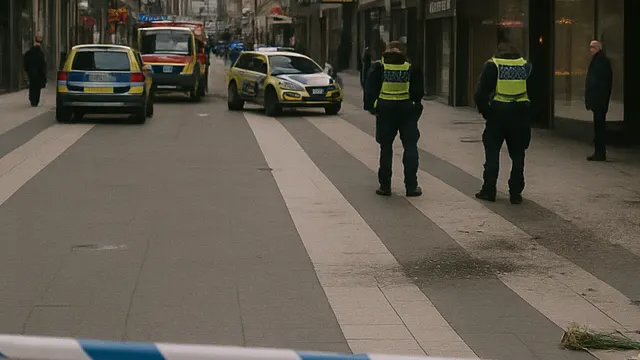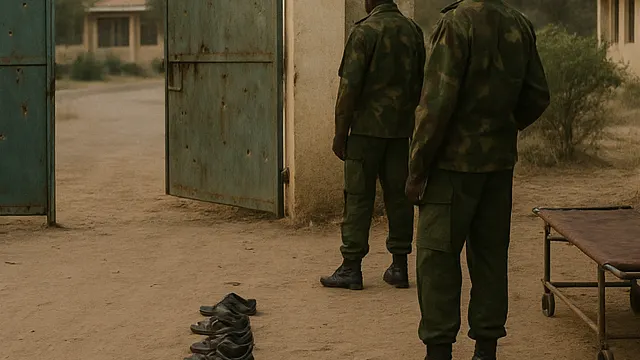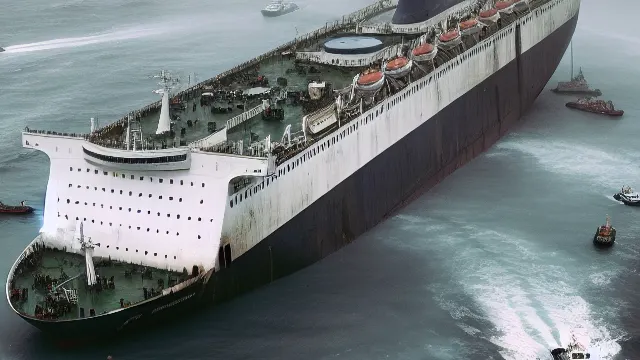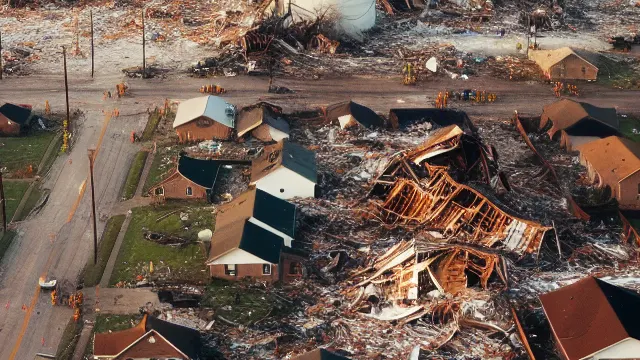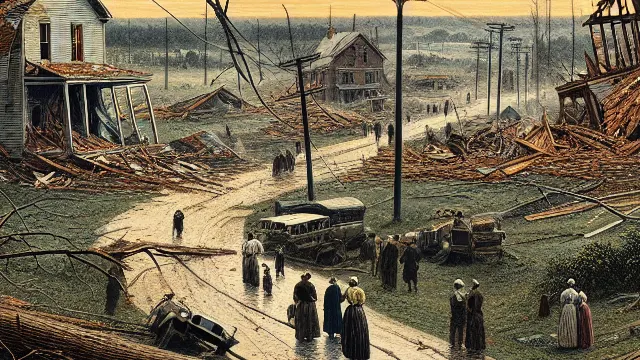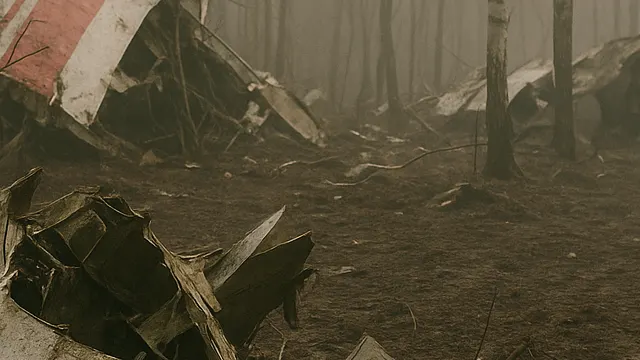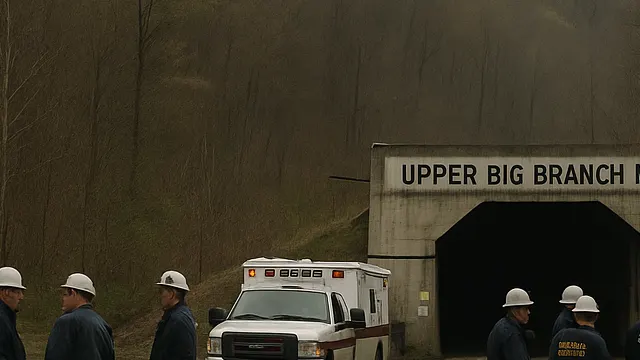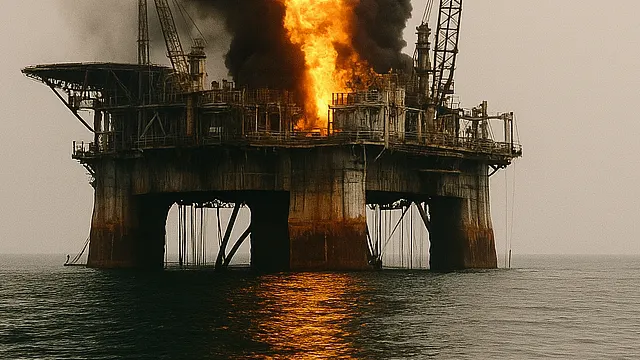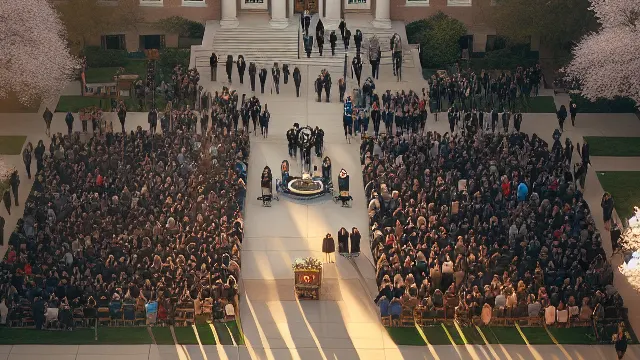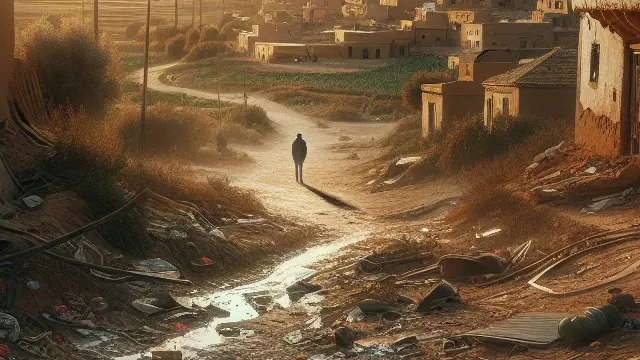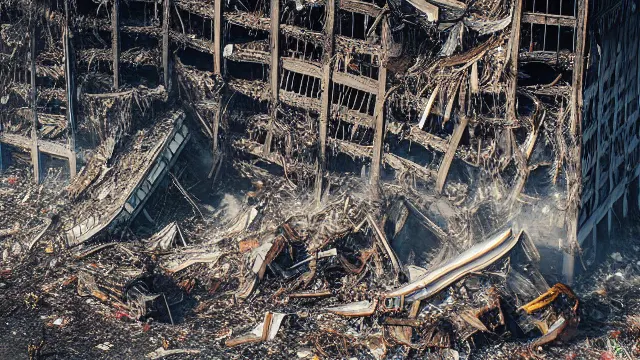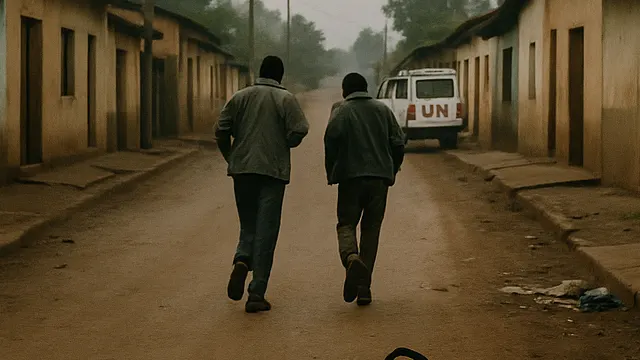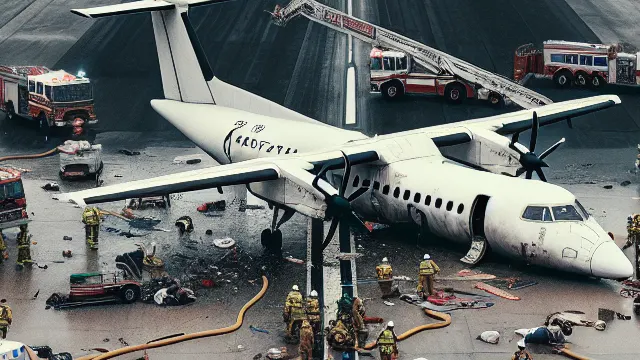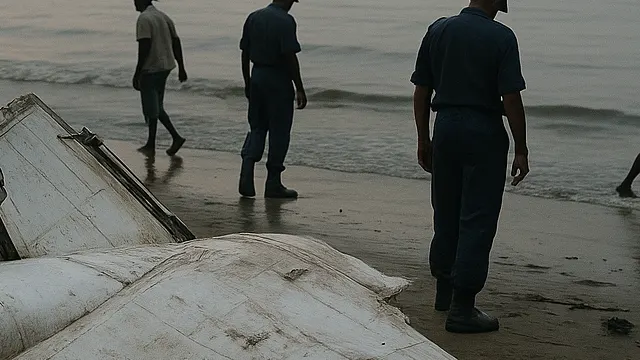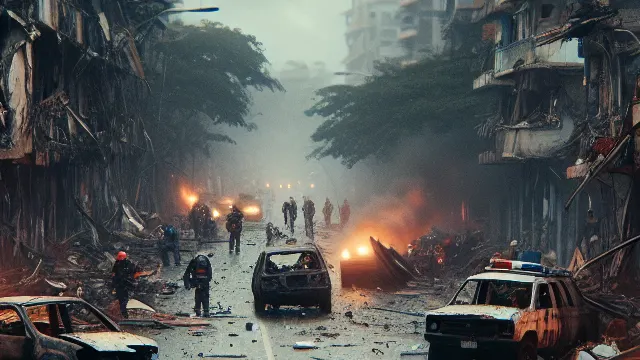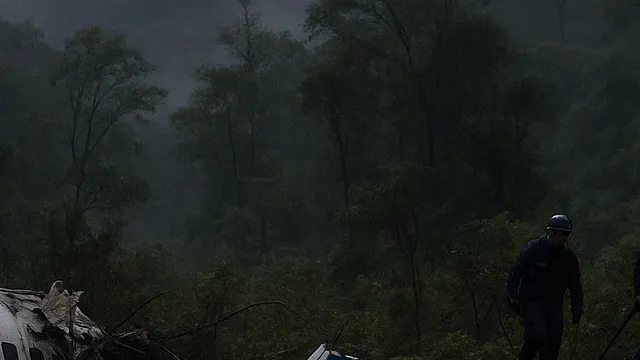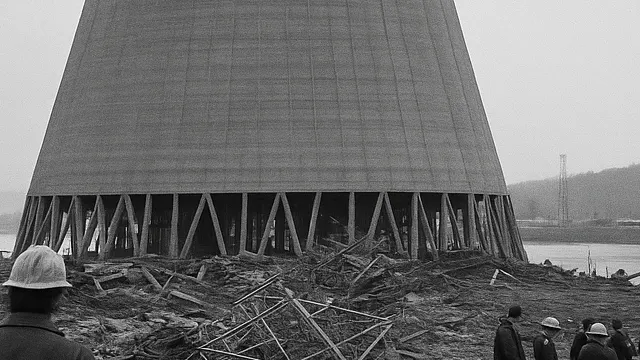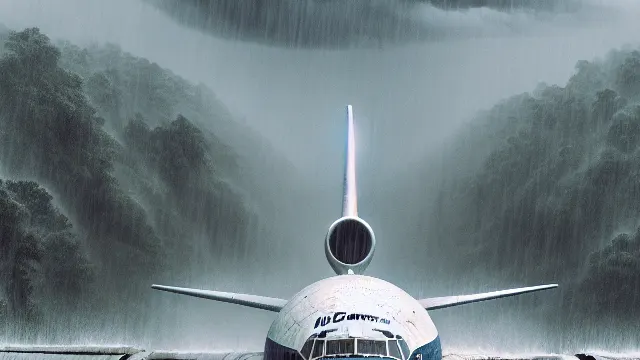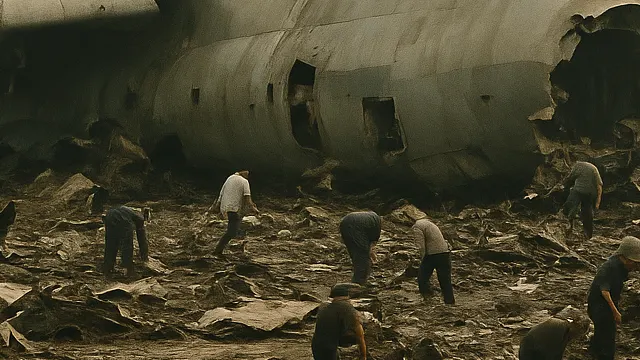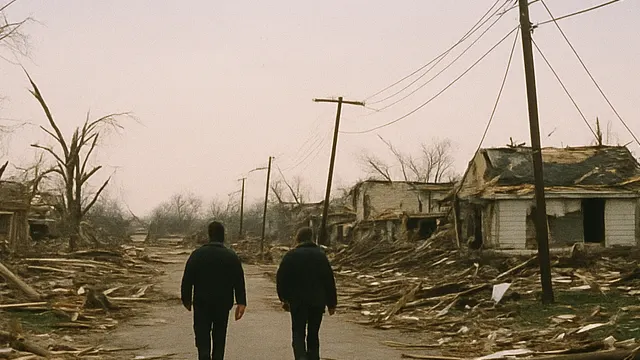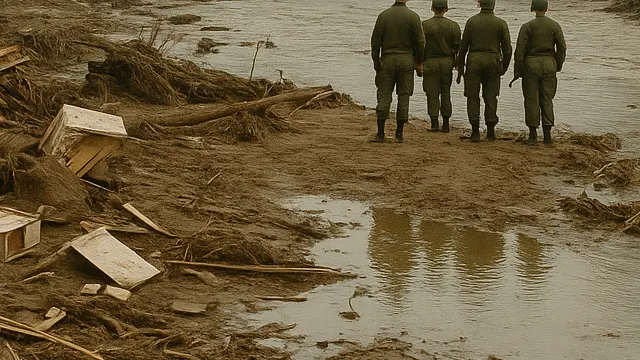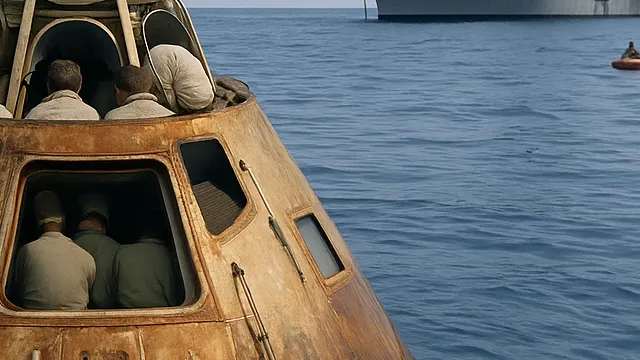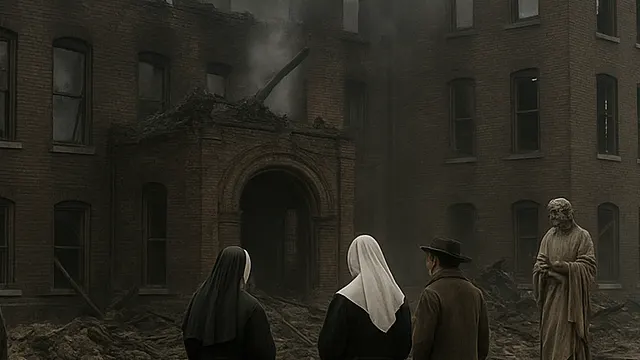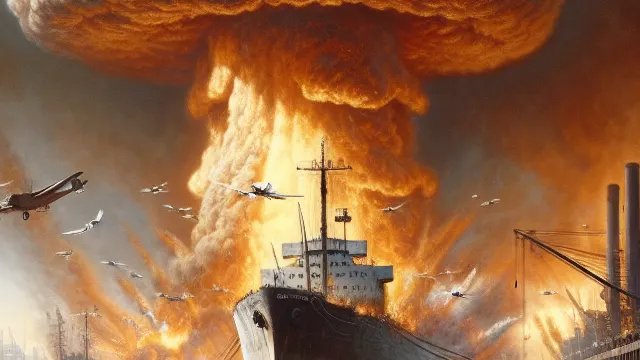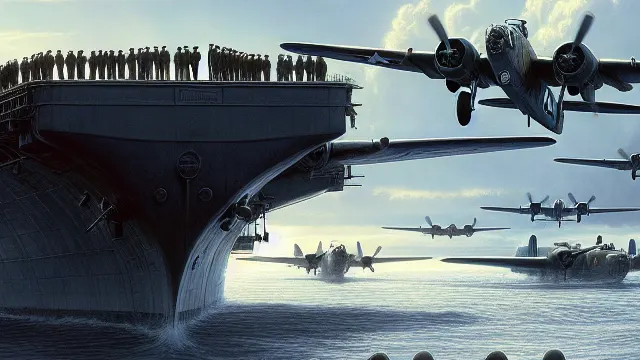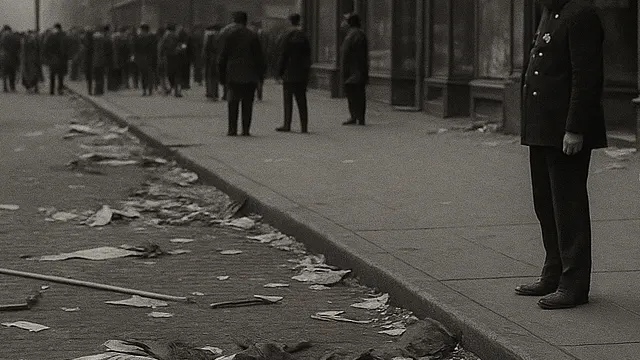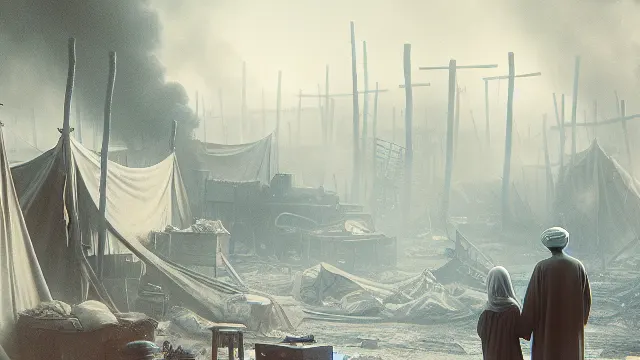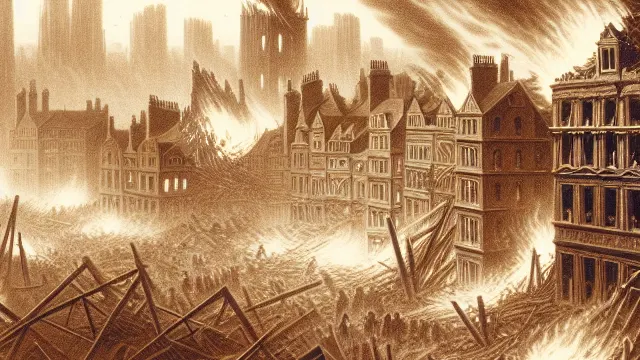April
Killing of Daunte Wright
The killing of Daunte Wright by police officer Kim Potter in Brooklyn Center, Minnesota, on April 11, 2021, occurred amid nationwide scrutiny over police violence and racial injustice. Potter fatally shot Wright during a traffic stop, later claiming she mistook her firearm for a Taser. The incident sparked widespread protests, significant unrest, and prompted both local and national reforms in policing practices.
The Sinking of KRI Nanggala (402)
The devastating loss of KRI Nanggala (402) highlights the perilous nature of submarine operations and the Indonesian Navy's challenges in modernizing its aging fleet.
The 2021 Meron Crowd Crush
The 2021 Meron Crowd Crush was a tragic event that occurred during the religious Lag BaOmer festival, resulting in 45 deaths and highlighting significant safety concerns at mass gatherings.
Stay in the Loop!
Become a Calamity Insider and get exclusive Calamity Calendar updates delivered straight to your inbox.
Thanks! You're now subscribed.
The 2018 Toronto Van Attack
The 2018 Toronto Van Attack left a permanent scar on Canada, ending with 10 deaths and sparking debates on mental health and online radicalization.
2017 Stockholm Truck Attack
On April 7, 2017, a hijacked truck was deliberately driven down a busy pedestrian street in central Stockholm, resulting in the deaths of five people and injuring many others. The attacker, a rejected asylum seeker from Uzbekistan, was captured hours later. The attack shocked Sweden, leading to stricter security and immigration policies, and remains one of the country’s deadliest acts of terror.
Palm Sunday Church Bombings (Egypt, 2017)
On April 9, 2017, two Coptic Christian churches in Egypt—St. George’s in Tanta and Saint Mark’s Cathedral in Alexandria—were struck by coordinated suicide bombings during Palm Sunday services. The attacks killed 47 people and wounded over 120, marking one of the deadliest days for Egypt’s Christian minority in recent history and intensifying national and international scrutiny of religious violence and security in Egypt.
Garissa University College Attack
On April 2, 2015, heavily armed al-Shabaab militants stormed Kenya’s Garissa University College at dawn, killing 148 people—mostly students—in one of the deadliest terror attacks in the country’s history. The militants targeted Christian students, sparking a 15-hour siege and prompting sweeping changes to Kenya’s security and campus infrastructure.
The 2015 Texas–Oklahoma Flood and Tornado Outbreak
A historic severe weather event in May 2015 brought devastating floods and destructive tornadoes to Texas and Oklahoma, resulting in significant loss of life and property while shaping future emergency response efforts.
2015 Nepal Earthquake
On April 25, 2015, a devastating earthquake struck Nepal, leaving a profound impact on the nation with significant casualties and widespread destruction, while igniting a global response.
The Great Fire of Valparaíso
A catastrophic urban wildfire swept through the hillsides of Valparaíso, Chile, in April 2014, destroying thousands of homes and leaving deep scars on the city’s landscape and its people.
2014 South Korean Ferry Disaster
A tragic maritime disaster that claimed 304 lives, highlighting systemic failures aboard a South Korean ferry and prompting widespread national reform.
The Boston Marathon Bombing
A tragic bombing attack at the 2013 Boston Marathon resulting in deaths, injuries, and major security changes.
West Fertilizer Company Explosion
On April 17, 2013, the small town of West, Texas, was rocked by a massive explosion at the West Fertilizer Company. The disaster resulted in significant loss of life, injury, and property damage, highlighting significant gaps in chemical storage regulations.
Rana Plaza Collapse
The tragic collapse of Rana Plaza highlighted severe safety issues in Bangladesh's garment industry, leading to over 1,100 deaths and prompting global reform for worker safety.
The 2011 Super Outbreak
The 2011 Super Outbreak was one of the most devastating tornado outbreaks in U.S. history, occurring over four days in April and leaving a path of destruction across the Southern, Midwestern, and Eastern United States, with Alabama facing the most severe impacts.
2010 Polish Air Force Tu-154 Crash (Smolensk Air Disaster)
On April 10, 2010, a Polish Air Force Tupolev Tu-154M carrying President Lech Kaczyński and 95 others crashed in dense fog near Smolensk, Russia, killing all aboard. The passengers were en route to a 70th-anniversary commemoration of the Katyn massacre. The disaster plunged Poland into mourning, upended its leadership, and led to prolonged investigations, reforms, and controversy that continue to reverberate in Polish-Russian relations.
Upper Big Branch Mine Disaster
On April 5, 2010, a massive explosion ripped through the Upper Big Branch coal mine in Montcoal, West Virginia, killing 29 miners. The deadliest U.S. mine accident in decades, it exposed deep failings in mine safety practices and corporate responsibility, ultimately transforming regulation and accountability in the coal industry.
Deepwater Horizon Oil Spill
On April 20, 2010, the Deepwater Horizon drilling rig suffered a catastrophic blowout in the Gulf of Mexico, leading to one of the largest marine oil spills in history. The spill resulted in the release of millions of barrels of oil, causing extensive environmental and economic damage.
The 2009 L’Aquila Earthquake
In the early hours of April 6, 2009, a magnitude 6.3 earthquake struck L’Aquila and the surrounding Abruzzo region of central Italy. The disaster killed 309 people, injured over 1,600, and left more than 65,000 people homeless, shattering historic communities and prompting national soul-searching about risk, responsibility, and resilience.
The Virginia Tech Shooting
On April 16, 2007, Virginia Tech in Blacksburg, Virginia, became the scene of one of the deadliest school shootings in U.S. history when senior student Seung-Hui Cho killed 32 people and injured 17 others before taking his own life.
The Amagasaki Rail Crash
A tragic derailment on April 25, 2005, which underscored the dire consequences of prioritizing speed over safety in railway operations, leading to 107 deaths and over 560 injuries.
The Hainan Island Incident
A mid-air collision on April 1, 2001, near Hainan Island in the South China Sea, sparked a significant diplomatic standoff between the United States and China.
The Lillelid Murders
In April 1997, a young family was brutally attacked and three members killed during a carjacking and abduction by six Kentucky youths in rural Tennessee. The surviving toddler was left forever changed. The case shocked the nation for its senseless brutality and the youth of the perpetrators.
Haouch Khemisti Massacre
The Haouch Khemisti massacre was a brutal attack on a small Algerian village during the civil war, highlighting the era's extreme violence and insecurity.
The Port Arthur Massacre
In 1996, the Port Arthur Massacre marked a devastating moment in Australian history, leading to significant changes in gun laws following a deadly shooting at a historic Tasmania site.
The Oklahoma City Bombing
On April 19, 1995, a devastating bombing occurred in Oklahoma City, targeting the Alfred P. Murrah Federal Building and resulting in the deaths of 168 people. Orchestrated by Timothy McVeigh and Terry Nichols, this act of domestic terrorism was a reaction against perceived governmental overreach and led to sweeping changes in security measures across the United States.
The Rwandan Genocide Begins
On April 7, 1994, following the assassination of Rwandan President Juvénal Habyarimana, systematic mass killings erupted in Kigali and quickly spread across Rwanda, marking the start of one of the twentieth century’s most devastating genocides. Over the next 100 days, as the world looked on, more than half a million Tutsi and moderate Hutu were murdered. This narrative retraces the first harrowing hours—and the history that set them in motion—through the eyes of those who witnessed a nation descend into horror.
KLM Cityhopper Flight 433
A tragic accident involving KLM Cityhopper Flight 433 occurred at Schiphol Airport in Amsterdam on April 4, 1994, resulting in three fatalities and a critical examination of airline safety protocols.
1993 Zambia National Football Team Plane Crash
On April 27, 1993, the Zambia national football team—nicknamed the “Chipolopolo”—perished when their military plane crashed into the Atlantic Ocean off the Gabonese coast near Libreville. All 30 onboard died, including 18 players, coaches, staff, and crew. The disaster devastated Zambian football, spurred national mourning, and led to enduring changes in air travel policy and aviation safety across Africa.
The 1993 Bishopsgate Bombing
On April 24, 1993, a devastating bombing orchestrated by the Provisional IRA in London's Bishopsgate financial district aimed to force British withdrawal from Northern Ireland by causing mass economic disruption.
1992 Los Angeles Riots
The 1992 Los Angeles Riots were a series of violent confrontations and civil disturbances triggered by the acquittal of four LAPD officers filmed beating Rodney King, revealing deep-rooted racial and economic tensions in the city.
The 1992 Guadalajara Explosions
A catastrophic series of explosions in Guadalajara's Analco district, ignited by a gasoline leak, caused massive devastation on April 22, 1992, leading to significant casualties and long-term changes in safety regulations.
The Aviateca Flight 901 Crash
On April 9, 1990, Aviateca Flight 901, a DC-9-32 en route from Guatemala City to San Salvador, crashed into the San Vicente volcano during its approach to Ilopango International Airport amidst poor weather, killing all 81 aboard. The tragedy became a landmark case of controlled flight into terrain (CFIT) and led to significant changes in aviation safety protocols.
Hillsborough Disaster
On April 15, 1989, a tragic human crush at Hillsborough Stadium resulted in the loss of 97 lives, sparking major reforms in stadium safety and crowd management.
Chernobyl Disaster
The catastrophic explosion at Chernobyl's Reactor No. 4 on April 26, 1986, remains one of the most devastating nuclear accidents in history, marked by human error, design flaws, and lasting global repercussions.
The 1983 United States Embassy Bombing in Beirut
On April 18, 1983, a devastating suicide bombing targeted the United States Embassy in Beirut, Lebanon, killing 63 people and marking a pivotal moment in Middle Eastern terrorism and U.S. diplomatic security policies.
Iranian Embassy Siege (1980)
In late April and early May of 1980, six armed men stormed the Iranian Embassy in London, taking 26 hostages and demanding the release of prisoners in Iran. The crisis unfolded over six tense days, drawing a global audience and culminating in a dramatic rescue by the British SAS, which set new standards for counter-terrorist operations worldwide.
Willow Island Disaster
On April 27, 1978, a massive scaffold collapse at the Pleasants Power Station in Willow Island, West Virginia, killed 51 construction workers, making it the deadliest construction accident in U.S. history at the time. The tragedy exposed critical flaws in safety oversight, changed construction practices, and left a lasting mark on both regulatory policy and local communities.
Southern Airways Flight 242 Crash
On April 4, 1977, Southern Airways Flight 242 encountered a severe thunderstorm and crashed near New Hope, Georgia, resulting in 72 fatalities and significant changes in airline safety protocols.
1975 Tân Sơn Nhứt C-5 Accident - Operation Babylift
On April 4, 1975, an overloaded U.S. Air Force C-5A Galaxy, evacuating Vietnamese orphans and caregivers during Operation Babylift, crashed near Saigon after catastrophic cargo door failure, killing 138 of the 328 aboard—one of the deadliest air disasters of the Vietnam War's chaotic end.
The 1974 Super Outbreak (First Day)
On April 3, 1974, a violent, fast-moving storm system spawned the deadliest tornado outbreak ever recorded at the time, unleashing more than 100 tornadoes in less than 24 hours across the Midwest and Southern United States. By nightfall, entire communities were devastated, hundreds had lost their lives, and the nation’s understanding of severe weather had changed forever.
Pan Am Flight 812 Crash
On April 22, 1974, Pan Am Flight 812, a Boeing 707 en route from Hong Kong to Sydney via Bali, tragically crashed into a mountain near Denpasar, Indonesia, claiming 117 lives.
The 1972 Black Hills Flood
On the night of June 9–10, 1972, a stationary thunderstorm system unleashed unprecedented rainfall over the Black Hills region of South Dakota, causing Rapid Creek to surge and leading to the catastrophic collapse of the Canyon Lake Dam. The resulting flash flood swept through Rapid City under cover of darkness, killing 238 people, injuring thousands, and destroying much of the city’s infrastructure and homes. The tragedy spurred lasting changes in disaster policy, urban planning, and public memory.
Apollo 13 Mission Crisis
The Apollo 13 Mission Crisis was a life-threatening emergency during NASA's third manned lunar landing attempt, triggered by an explosion in an oxygen tank. Though the lunar landing was aborted, the crew survived after a dramatic effort by both astronauts and ground control, turning near disaster into a triumph of ingenuity and teamwork.
Assassination of Martin Luther King Jr.
On April 4, 1968, civil rights leader Dr. Martin Luther King Jr. was fatally shot while standing on the balcony of the Lorraine Motel in Memphis, Tennessee. His death shocked the nation, ignited unrest in over 100 cities, and remains a pivotal moment in American history with enduring questions about justice and legacy.
BOAC Flight 712 Accident at Heathrow
On April 8, 1968, a British Overseas Airways Corporation Boeing 707 departing London Heathrow suffered a catastrophic engine fire moments after takeoff, resulting in an emergency landing, a deadly onboard fire, and the heroic actions of Chief Stewardess Barbara Jane Harrison. The incident claimed five lives and led to sweeping changes in airline safety protocols and industry maintenance standards.
The Sinking of USS Thresher (SSN-593)
On April 10, 1963, the U.S. Navy nuclear submarine USS Thresher was lost with all hands during deep-diving tests off Cape Cod, triggering the deadliest submarine disaster in American history and transforming naval safety protocols for generations.
The Bay of Pigs Invasion
A failed CIA operation in 1961 attempting to overthrow Cuba's Fidel Castro, marking a profound Cold War defeat for the United States.
St. Anthony’s Hospital Fire
On April 4, 1949, a catastrophic nighttime fire swept through St. Anthony’s Hospital in Effingham, Illinois. Seventy-four people died—including patients, nuns, and a priest—making it one of the deadliest hospital fires in U.S. history. The disaster exposed the hazards of outdated medical buildings and led to monumental changes in fire safety codes for healthcare facilities nationwide.
Texas City Disaster
The Texas City Disaster of April 16, 1947, was a catastrophic industrial explosion that led to nearly 600 fatalities and extensive destruction, redefining safety regulations for hazardous materials globally.
The 1944 Bombay Explosion
On April 14, 1944, a catastrophic fire aboard the SS Fort Stikine at Bombay’s Victoria Dock triggered two massive explosions, killing at least 800 people and devastating a wide swath of the city. The disaster destroyed ships, infrastructure, and homes, exposed failures in wartime logistics, and led to life-saving changes in port safety.
The Doolittle Raid
The Doolittle Raid was a daring air operation by the United States in April 1942, which demonstrated the vulnerability of Japanese home islands following the attack on Pearl Harbor. It significantly influenced morale and strategy during World War II.
The May Day Riots of 1919
On May 1, 1919, a peaceful labor demonstration in Cleveland, Ohio, erupted into chaos as police, armed citizens, and ex-soldiers clashed with socialist marchers. The event left two dead, dozens injured, and set the stage for a national crackdown on radicals during the first Red Scare.
The Ludlow Massacre
The Ludlow Massacre, a violent confrontation between striking coal miners and the Colorado National Guard, marked a pivotal moment in American labor history, highlighting the desperate struggles for workers' rights in the early 20th century.
The Sinking of the RMS Titanic
In April 1912, the RMS Titanic, the largest passenger liner of its time, sank on its maiden voyage after hitting an iceberg, leading to the deaths of approximately 1,500 people.
The 1906 San Francisco Earthquake
The devastating earthquake that struck San Francisco on April 18, 1906, led to unprecedented destruction, fires, and loss of life, forever changing the city's landscape and approach to seismic safety.
The Sinking of the SS Atlantic
The catastrophic wreck of the SS Atlantic in 1873 near Marrs Head, Nova Scotia, marks one of the deadliest maritime disasters of the time, highlighting dire flaws in navigation and safety protocols.


